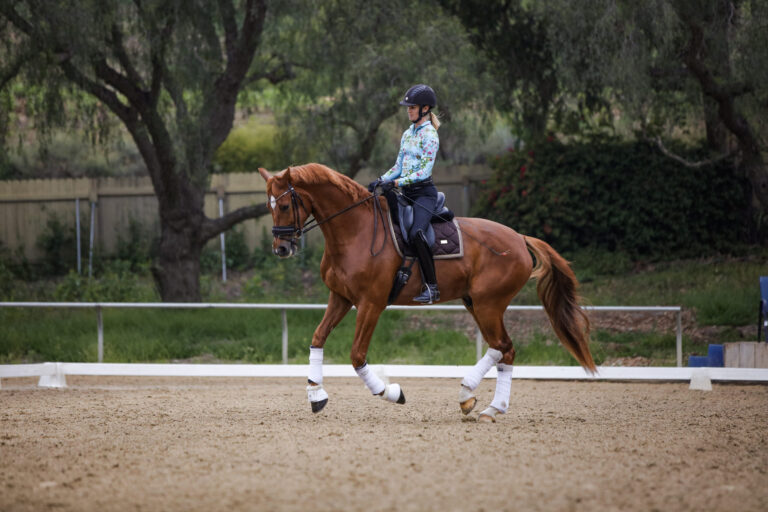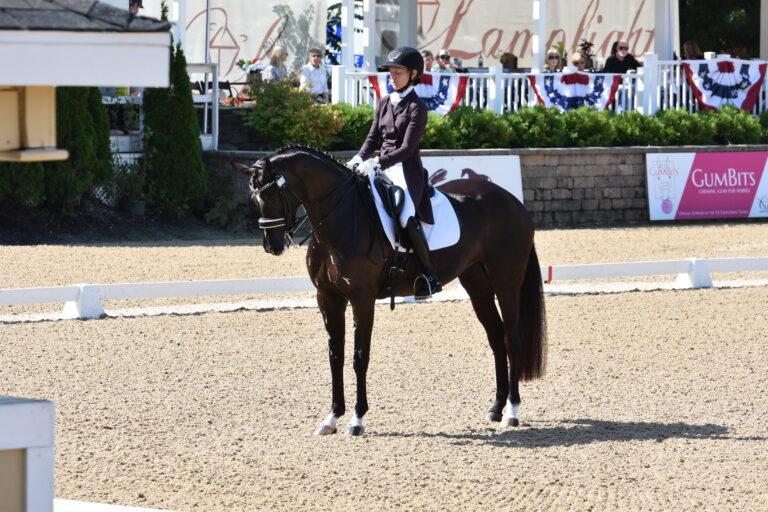Q: I have often read that a desirable trait of a good dressage horse is to be “quick behind.” What does that mean, and how can I tell if the hind legs are quick by looking?—Name withheld by request
A: If a horse is going to progress up the levels and become a competitive FEI dressage horse with aspirations of competing at Intermediaire and Grand Prix, he must clearly and willingly bend the joints of his hindquarters and hind legs and step under his body actively. The ability to do this helps a horse to be able and willing to piaffe, which is important at those levels of competition. This ability to be “quick,” in my opinion, is one of the main reasons why we see such a difference in the quality of the modern sport horses versus the old-fashioned, heavier horses of the past.

We often see examples of elastic but inactive movers who are quite competitive at the lower levels but struggle as they progress up the levels because of their tendency to be “lazy” and “slow” behind and/or unable to articulate the joints of their hindquarters and legs. If the horse is able to step under correctly, he lightens and/or raises his forehand and provides shoulder freedom. If the hocks trail or the toes of the hind feet drag, the horse cannot engage correctly.
Correct engagement results in carrying power. It is exhibited in the weight-bearing phase of the hind legs during movement. The horse increases the flexion of the lumbosacral joint as well as the joints of his hind legs during this phase. In contrast, a Hackney pony has quite active hocks that articulate up and out behind his body. This flexion of the joints is not engagement.
In order to see the level of engagement, watch the bending or articulation of the horse’s joints in his hindquarters and legs and look for positive diagonal advanced placement (DAP). This means that the hind feet land slightly before the front feet in the diagonal pairs (as seen in the trot photo on this page). With excellent uphill movers, there’s another visual indicator of positive DAP: The horse appears to round his loin and lower his croup. The best example of this is a correct piaffe. But you can also see it in correctly ridden downward transitions where the horse steps under and carries his weight behind while staying active.

During downward transitions, you can feel when a horse is active behind: He feels like he wants to carry you. He stays fluid during transitions and always feels ready to go again as opposed to resting and getting sluggish with his hind legs.
If a horse has negative DAP, it means he is on his forehand. The front feet land slightly in front of the hind feet of the diagonal pair. The photo shown below is a horse with negative DAP. Before he is warmed up, he drags his hind toes and his hind legs swing out behind him instead of bending and coming under his body more.
A horse can learn to be quicker and more active behind through correct training, but it is easier to develop a horse that naturally offers it.

Janet “Dolly” Hannon is a USEF “S” dressage judge, the chairperson of the USDF Freestyle Committee and a former member of the USDF Judges Committee. Based in Arvada, Colorado, she trains at Legacy Valley Farm.











